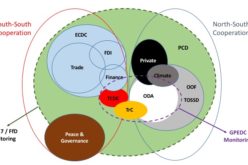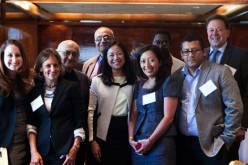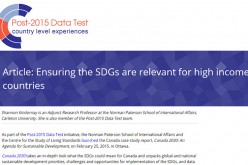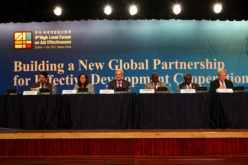The Post-2015 debate: relevant trends for think tanks

[Editor’s note: This is the first of a series of posts that will reflect on the processes of introducing research by southern think tanks into the international agenda. The reflections will be based on the current debate on the post-2015 development goals. This first post sets the scene by addressing the High Level Panel’s report.]
The Southern Voice Initiative, which seeks to link southern think tanks with the global development debate, is based on the idea that strengthening this relationship can be beneficial both ways: the global debate on international development can be enriched by locally grounded research, and developing country think tanks can better understand the global context and use it wisely in their strategic plans and research agendas. Throughout a series of posts we will discuss these links from both strategic and practical perspectives. This first one identifies key crucial policy issues that I believe will be of great importance in the next few years.
So now that the much awaited High Level Panel’s report on the post-2015 development agenda (HLP) is out, and that the Sustainable Development Solutions Network (SDSN) has prepared an Action Agenda for Sustainable Development that seeks to inform the Open Working Group on Sustainable Development Goals, there are some clear trends that think-tanks should keep an eye on, not only now but in the following years.
1. Inequality: One of the liveliest debated topics has been on whether inequality should be included as a specific goal for the next development agenda. While the HLP report acknowledges it, it does not suggest a clear goal for inequality. The SDSN report takes a stance on the issue and suggests including it as a specific goal and target.
Whether it is included or not in the final agenda, is hard to foresee. But we can certainly expect this debate to continue. Some crucial topics for think tanks include: how and what to measure as well as how to achieve political space for bold policies against inequality in societies that have grown complacent with it.
2. Early education: On the education front, we see an agreement on the need to focus on early childhood (0-5 year olds) after it was overlooked in the MDGs. Innovative ideas on how to promote development in early childhood, taking into consideration local factors and traditions will be greatly needed in the upcoming years. Local think tanks that work on education might find a new and relevant niche.
3. Youth: Another group that was ignored in the first MDGs is the youth. Although there is always a romantic perception that young people will have the power to change the world, their situation worrying. The ILO estimates that 73 million young people are unemployed worldwide in 2013. The fact that experts have coining the term NEET – those youngsters that are who are not participating in either education, employment or training – exemplifies the relevance of the issue at hand. The youth, in both reports, is not only a matter of hope but also of concern.
I wonder if this line of research will be picked up by existing research centres or new types of more flexible young organisations will champion this topic. It has certainly become a priority in Europe where the youth is facing a bleak future.
4. Cities: Probably the most interesting trend is cities. We even see others are catching up with the idea. The Rockefeller Foundation, for instance, has launched its 100 Resilient Cities Challenge to see cities prepare for the future. As the world becomes more urban, cities are becoming an increasingly relevant place to tackle global issues. Despite the hype on the relevance of cities in tackling global issues, I would still be concerned of how much city governments can achieve in the context of national policies that they do not control.
This issue is relevant for think tanks since we might see an increasing relevance of majors in decision making processes. They might become champions of change, with their hands tied by national politics and policies. They are likely to seek for sound policy advice in issues well beyond traffic and urban planning. But how many think tanks are working at the city level?
5. New partnerships: The final question is that of who will be invited to discuss these issues, whether nationally or internationally. Both reports acknowledge that decisions in the following decades will not be made by states alone, and that non-governmental actors, including think tanks will have a part in the discussion, and even of the responsibility of carrying forward the agenda.
How this will take place in practice is an important question; but at least the idea has been established. Even in those countries were non-governmental actors (including think tanks) are still not welcomed in public policy debates, eventually, they will. Furthermore, their participation might start changing, being not only advisors but also stakeholders in the decisions.
These are some ideas and trends that both reports touch upon. Whether they are part of the final agenda at the end of the day will depend on political negotiations. Either way, the issues are likely to be alive in the following years.
Furthermore, the HLP report has introduced two interesting concepts that could impact the work of think tanks.
- Policy-peer review: The academic concept of peer review is suggested as an idea to improve policymaking. The idea would be for other friendly governments to evaluate the policies put forward by a given country -much like the African Peer Review Mechanism sought to do; but did it work? Are there concrete ways of transferring the concept to the policy arena? If there is, think tanks are likely candidates to support it.
- Multi-stakeholder thematic partnership: The HLP also suggests grouping various actors around specific goals, whether they are education, governance or the environment. Think tanks are likely to be invited to participate in such groups.
As the debates progress in the international arena I will keep an eye on those trends that could inform think tanks future agendas. After all, most think tanks have to balance the acts of the ‘market for policy advice’ and ‘the market for funding’ as Goran Buldioski comments.
In the rest of this series, I will shift the focus from following the trends to actually doing something about them.
- The following post will discuss the main challenges think tanks face to insert themselves in global debates, especially if their main focus has been local policymaking.
- The third post will discuss the strategies that think tanks can create, manage and communicate a more global research agenda.
- Another post will explore the practical strategies that think tanks can employ to actively engage with the events and meeting where the international debates take place.
As this series moves forward I would be happy to hear from you what are your experiences and your questions when connecting to global debates.
1,315 total views, 2 views today








